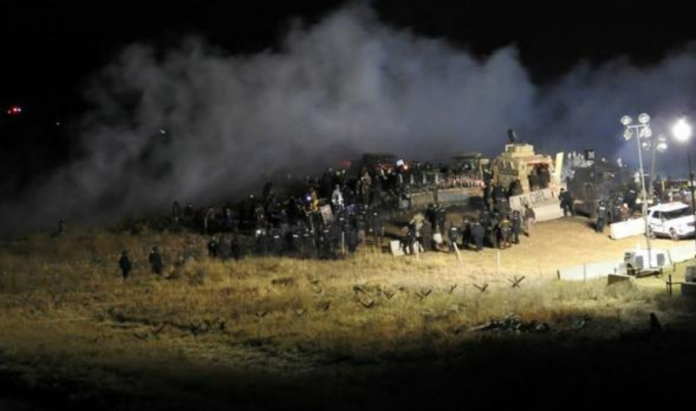
MORTON COUNTY, N.D., Dec. 4, 2016 (Gephardt Daily/UPI) — The Army Corps of Engineers has denied a permit for the construction of a key section of the Dakota Access Pipeline, multiple news agencies reported Sunday afternoon.
The decision effectively halts the construction on the 1,172-mile oil pipeline about half a mile south of the Standing Rock Sioux Reservation.
Dozens of demonstrators have been speaking out against the pipeline in Morton County, N.D., for weeks, and many have been arrested by officers attempting to remove them from private land. The Standing Rock Sioux Tribe has opposed the line for two years.
Native American tribes oppose the pipeline on philosophic and environmental grounds.
The Army’s assistant secretary for civil works, Jo-Ellen Darcy, announced Sunday afternoon it will not approve an easement that would allow the proposed pipeline to cross under Lake Oahe in North Dakota.
Darcy said in a press release that she based her decision on a need to explore alternate routes for the Dakota Access Pipeline crossing.
“The best way to complete that work responsibly and expeditiously is to explore alternate routes for the pipeline crossing,” Darcy said in a statement.
Darcy added that the consideration of alternative routes would be best accomplished through an environmental impact statement with full public input and analysis.
President Barack Obama finally addressed the controversial $3.8 billion Dakota Access Pipeline on Wednesday, confirming the Army Corps of Engineers was looking at ways to reroute the line.
In an interview with Now This News, Obama spoke of the controversy for the first time.
“My view is that there is a way for us to accommodate sacred lands of Native Americans,” Obama said. “I think that right now the Army Corps is examining whether there are ways to reroute this pipeline.”
In his remarks, Obama acknowledged that the land the pipeline is slated to cover is on sacred land.
Obama’s administration was criticized in September when it temporarily blocked continuing work on the pipeline after a judge ruled construction could go forward.
Once completed, the pipeline is slated to transport crude oil through North Dakota, Iowa, Illinois and South Dakota.





